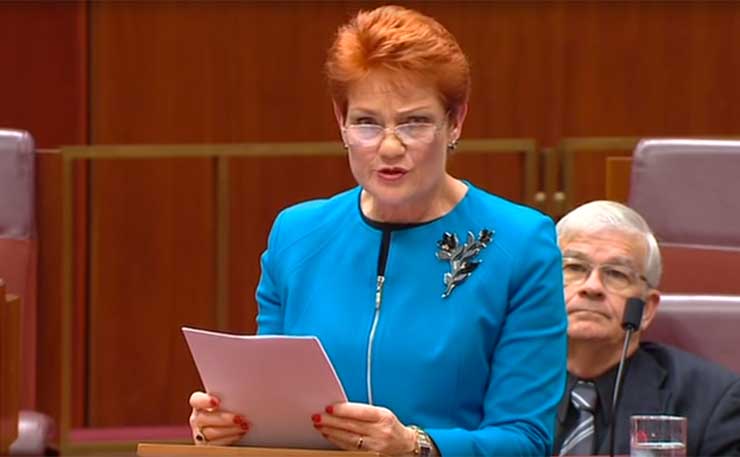Does the Queensland election have federal implications? You bet it does, writes Ben Eltham.
On Saturday, Queensland voters re-elected Annastacia Palaszczuk’s Labor government for a second term.
 The final result is still unknown, with the ALP needing 47 seats to form a majority. But with the ALP now on 46 seats and ahead in a number of doubtfuls, Labor looks almost certain to retain government.
The final result is still unknown, with the ALP needing 47 seats to form a majority. But with the ALP now on 46 seats and ahead in a number of doubtfuls, Labor looks almost certain to retain government.
It was a disappointing result for the fused northern Liberal-National Party, which was tossed out of office by angry voters in 2015, after squandering a record majority won in the landslide of 2012.
Led by Campbell Newman’s former treasurer Tim Nicholls, the LNP went into the election with every chance of winning. Palaszczuk’s rickety first-term government was never wildly popular with voters, and has struggled at various points, particularly over the thorny problem of what to do about Adani’s hugely controversial coal mine at Carmicheal in the state’s centre.
Polls were tight throughout the race, and the ALP was excepted to bleed votes in the regions and the north to the LNP and One Nation.
In the end, the ALP suffered just a 1.8 per cent swing against it. Ordinarily, that should have been enough for the LNP to grab some key marginals and win back government. But the LNP itself suffered a massive 7.6 per cent swing against.

Those votes overwhelmingly went to One Nation. Many of them failed to filter back to the LNP as preferences. Despite predictions that One Nation would win several seats and hold the balance of power, the minor party’s votes were spread too thinly to ensure seat victories.
The more important impact of One Nation’s resurgence was to weigh down the LNP primary vote, particularly in the south-east. Crucially, the LNP went backwards in greater Brisbane. Across a string of suburban electorates the ALP actually recorded good swings in its favour; the LNP looks to have lost 5 seats in Brisbane. By winning the Brisbane marginals, Premier Annastacia Palaszczuk has won herself a second term.
The blame game has started: George Christensen has blamed Turnbull. George Brandis has been forced to defend the performance of LNP leader Tim Nicholls. Nicholls blamed the long campaign for an embarrassing pre-election gaffe. It could be, as the Courier-Mail’s Dennis Atkins argues, that the Liberal-National marriage is headed for a break-up in Queensland.
Does the Queensland election have implications for Malcolm Turnbull? Yes, it does.
Ignore any analysis claiming the Queensland result was fought on state issues, and therefore without implications for the Turnbull government. The implications are clear, and they are overwhelmingly negative for Turnbull’s political future.
If you want to know why, simply look at the map of the current federal Parliament. The LNP holds 21 of Queensland’s 29 seats in the House of Representatives. That’s more than a quarter of the Coalition’s lower house caucus.

For a government that has already lost its Parliamentary majority, a poor result in Queensland in the next federal poll will mean curtains. The Coalition will need to hold all its current seats to gain re-election, and then pick up some extras wherever it can. A gaggle of marginals dot Brisbane’s suburbs. It can’t afford to go backwards in south-east Queensland.
Of course, you could argue that a state Labor government will be useful for the LNP — voters often punish state governments at federal polls. Even so, you can see why federal LNP backbenchers in south-east Queensland are worried. An ALP vote at similar levels to last Saturday night could easily sweep away eight or 10 of them.
 In the southern metropolises, the Queensland result has been interpreted as a bad result for One Nation, but that’s not quite true. Yes, Malcolm Roberts lost. But look at that state-wide result: 13 per cent of the Queensland electorate voted for One Nation, and the party picked up at one lower house seat. The Katter Party also polled well in its regional strongholds.
In the southern metropolises, the Queensland result has been interpreted as a bad result for One Nation, but that’s not quite true. Yes, Malcolm Roberts lost. But look at that state-wide result: 13 per cent of the Queensland electorate voted for One Nation, and the party picked up at one lower house seat. The Katter Party also polled well in its regional strongholds.
A solid fifth of the conservative vote looks to have split off from the LNP, hastening the transition of Australian politics away from the two-party system. The reality is now closer to a 3-and-a-half party system, in which the ALP and Coalition must share their electoral plurality with the Greens, One Nation and the gaggle of right-wing minor parties spawning like mushrooms on the right of the LNP base.
The long-term implications for Australian politics of a splintered conservative vote are significant. If right-wing minor party preferences fail to return to Liberals and Nationals with the loyalty that Greens preferences flow back to Labor, the Coalition’s vote will be profoundly damaged. If the LNP cannot win those voters back, it will struggle to form government in any future election.
As psephologist Ben Raue pointed out in the Guardian this week, “no longer are elections in Australia simply about a contest between Labor and the coalition”. With the Greens on the verge of winning a seat off the LNP in inner Brisbane, and One Nation polling a seventh of the Queensland electorate, parliamentary politics is getting more fragmented and complex across the country.

None of this will be news to Malcolm Turnbull. The seemingly impossible task of balancing the demands of the insurgent right with the need to craft policies attractive to Australia’s political centre has consumed his government. It is a riddle that Turnbull has been unable to solve. Destablised by constant crises, Turnbull’s administration is now closer to a lame duck than the stable government lauded at last year’s election.
Yesterday’s announcement that the Prime Minister was caving in and offering up a royal commission into banks only confirms the impression that the PM is not in charge of events. That’s because he is not.
The banking backflip came after a backbench revolt from the National Party, which would have forced the government’s hand. No wonder the drumbeat of leadership speculation rolls on.
Looming over everything, once again, is the spectre of the section 44 citizenship crisis. It’s a near certainty that yet more parliamentarians will be caught up in the section 44 dragnet. The next deadline is December 5, when Turnbull and Bill Shorten have agreed that MPs must provide all their citizenship details.
Given the disastrous end of the political year, the citizenship deadline could be very important. If yet more Coalition members resign, Turnbull’s leadership status could move from embattled to terminal.
Donate To New Matilda
New Matilda is a small, independent media outlet. We survive through reader contributions, and never losing a lawsuit. If you got something from this article, giving something back helps us to continue speaking truth to power. Every little bit counts.





